Quinten McNamara
Rev.com
Style-agnostic evaluation of ASR using multiple reference transcripts
Dec 10, 2024



Abstract:Word error rate (WER) as a metric has a variety of limitations that have plagued the field of speech recognition. Evaluation datasets suffer from varying style, formality, and inherent ambiguity of the transcription task. In this work, we attempt to mitigate some of these differences by performing style-agnostic evaluation of ASR systems using multiple references transcribed under opposing style parameters. As a result, we find that existing WER reports are likely significantly over-estimating the number of contentful errors made by state-of-the-art ASR systems. In addition, we have found our multireference method to be a useful mechanism for comparing the quality of ASR models that differ in the stylistic makeup of their training data and target task.
Reverb: Open-Source ASR and Diarization from Rev
Oct 04, 2024

Abstract:Today, we are open-sourcing our core speech recognition and diarization models for non-commercial use. We are releasing both a full production pipeline for developers as well as pared-down research models for experimentation. Rev hopes that these releases will spur research and innovation in the fast-moving domain of voice technology. The speech recognition models released today outperform all existing open source speech recognition models across a variety of long-form speech recognition domains.
Quantification of stylistic differences in human- and ASR-produced transcripts of African American English
Sep 04, 2024



Abstract:Common measures of accuracy used to assess the performance of automatic speech recognition (ASR) systems, as well as human transcribers, conflate multiple sources of error. Stylistic differences, such as verbatim vs non-verbatim, can play a significant role in ASR performance evaluation when differences exist between training and test datasets. The problem is compounded for speech from underrepresented varieties, where the speech to orthography mapping is not as standardized. We categorize the kinds of stylistic differences between 6 transcription versions, 4 human- and 2 ASR-produced, of 10 hours of African American English (AAE) speech. Focusing on verbatim features and AAE morphosyntactic features, we investigate the interactions of these categories with how well transcripts can be compared via word error rate (WER). The results, and overall analysis, help clarify how ASR outputs are a function of the decisions made by the training data's human transcribers.
Earnings-22: A Practical Benchmark for Accents in the Wild
Mar 29, 2022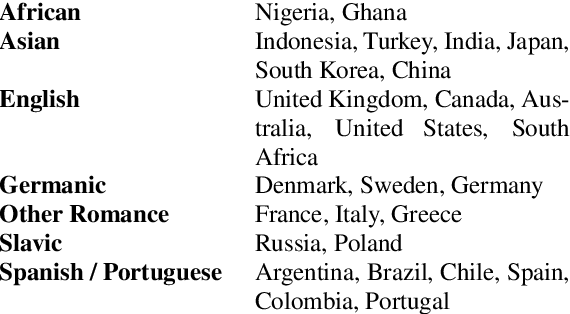
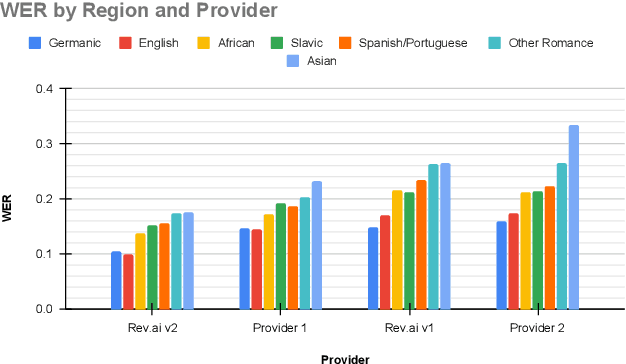
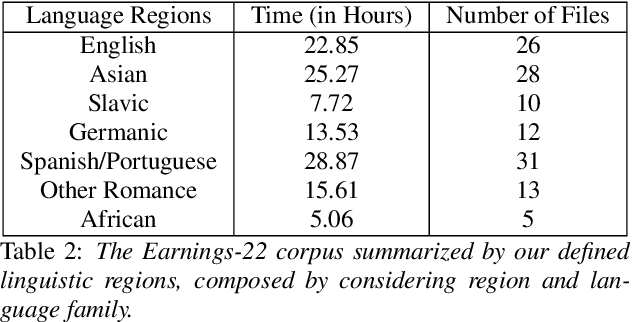

Abstract:Modern automatic speech recognition (ASR) systems have achieved superhuman Word Error Rate (WER) on many common corpora despite lacking adequate performance on speech in the wild. Beyond that, there is a lack of real-world, accented corpora to properly benchmark academic and commercial models. To ensure this type of speech is represented in ASR benchmarking, we present Earnings-22, a 125 file, 119 hour corpus of English-language earnings calls gathered from global companies. We run a comparison across 4 commercial models showing the variation in performance when taking country of origin into consideration. Looking at hypothesis transcriptions, we explore errors common to all ASR systems tested. By examining Individual Word Error Rate (IWER), we find that key speech features impact model performance more for certain accents than others. Earnings-22 provides a free-to-use benchmark of real-world, accented audio to bridge academic and industrial research.
Earnings-21: A Practical Benchmark for ASR in the Wild
Apr 28, 2021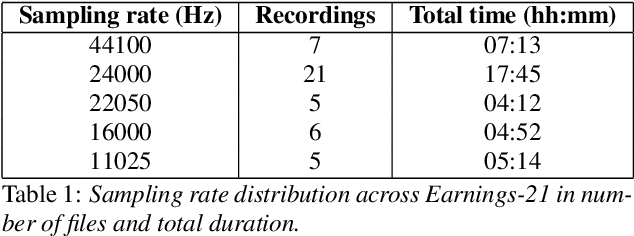
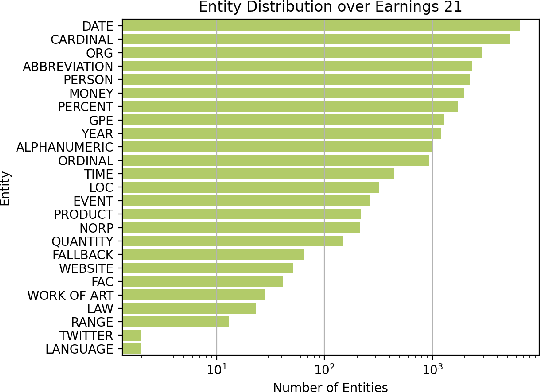
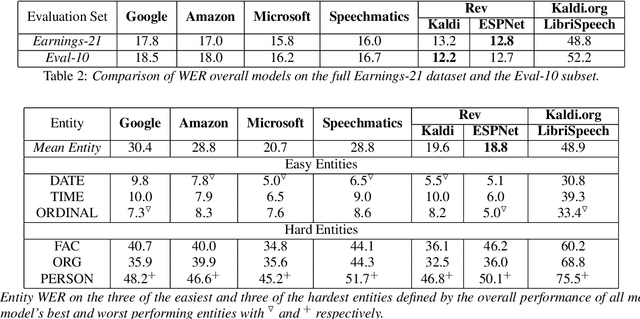

Abstract:Commonly used speech corpora inadequately challenge academic and commercial ASR systems. In particular, speech corpora lack metadata needed for detailed analysis and WER measurement. In response, we present Earnings-21, a 39-hour corpus of earnings calls containing entity-dense speech from nine different financial sectors. This corpus is intended to benchmark ASR systems in the wild with special attention towards named entity recognition. We benchmark four commercial ASR models, two internal models built with open-source tools, and an open-source LibriSpeech model and discuss their differences in performance on Earnings-21. Using our recently released fstalign tool, we provide a candid analysis of each model's recognition capabilities under different partitions. Our analysis finds that ASR accuracy for certain NER categories is poor, presenting a significant impediment to transcript comprehension and usage. Earnings-21 bridges academic and commercial ASR system evaluation and enables further research on entity modeling and WER on real world audio.
Accented Speech Recognition: A Survey
Apr 21, 2021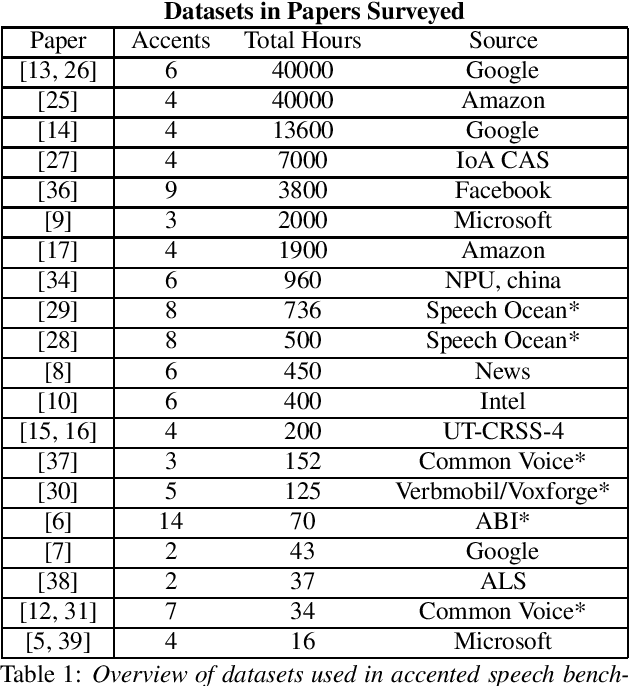
Abstract:Automatic Speech Recognition (ASR) systems generalize poorly on accented speech. The phonetic and linguistic variability of accents present hard challenges for ASR systems today in both data collection and modeling strategies. The resulting bias in ASR performance across accents comes at a cost to both users and providers of ASR. We present a survey of current promising approaches to accented speech recognition and highlight the key challenges in the space. Approaches mostly focus on single model generalization and accent feature engineering. Among the challenges, lack of a standard benchmark makes research and comparison especially difficult.
Developing a comprehensive framework for multimodal feature extraction
Feb 20, 2017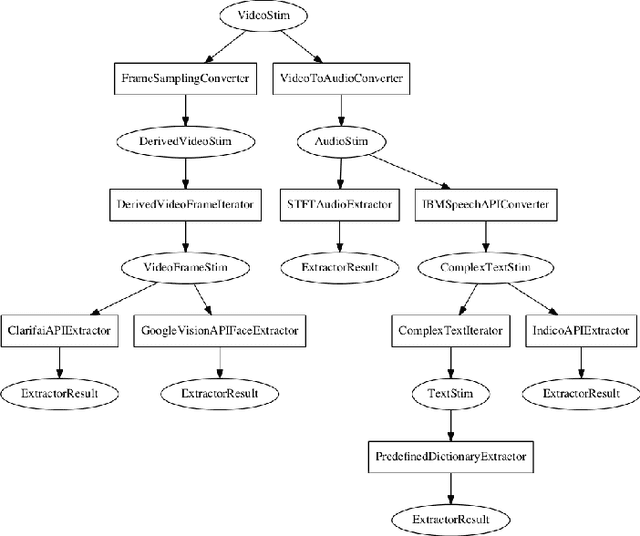
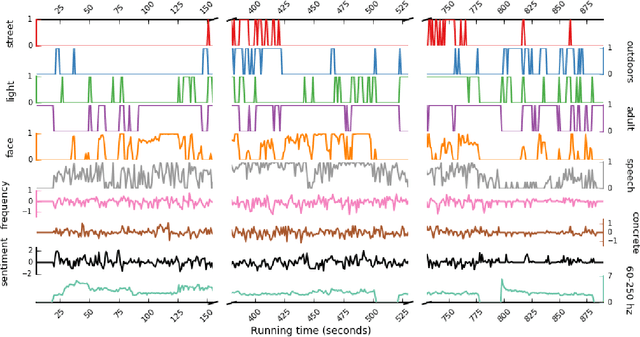
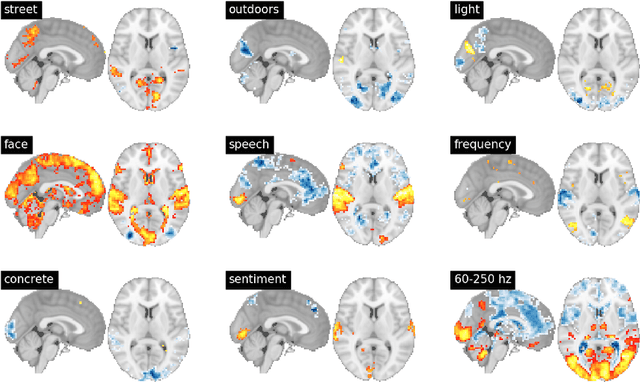
Abstract:Feature extraction is a critical component of many applied data science workflows. In recent years, rapid advances in artificial intelligence and machine learning have led to an explosion of feature extraction tools and services that allow data scientists to cheaply and effectively annotate their data along a vast array of dimensions---ranging from detecting faces in images to analyzing the sentiment expressed in coherent text. Unfortunately, the proliferation of powerful feature extraction services has been mirrored by a corresponding expansion in the number of distinct interfaces to feature extraction services. In a world where nearly every new service has its own API, documentation, and/or client library, data scientists who need to combine diverse features obtained from multiple sources are often forced to write and maintain ever more elaborate feature extraction pipelines. To address this challenge, we introduce a new open-source framework for comprehensive multimodal feature extraction. Pliers is an open-source Python package that supports standardized annotation of diverse data types (video, images, audio, and text), and is expressly with both ease-of-use and extensibility in mind. Users can apply a wide range of pre-existing feature extraction tools to their data in just a few lines of Python code, and can also easily add their own custom extractors by writing modular classes. A graph-based API enables rapid development of complex feature extraction pipelines that output results in a single, standardized format. We describe the package's architecture, detail its major advantages over previous feature extraction toolboxes, and use a sample application to a large functional MRI dataset to illustrate how pliers can significantly reduce the time and effort required to construct sophisticated feature extraction workflows while increasing code clarity and maintainability.
 Add to Chrome
Add to Chrome Add to Firefox
Add to Firefox Add to Edge
Add to Edge